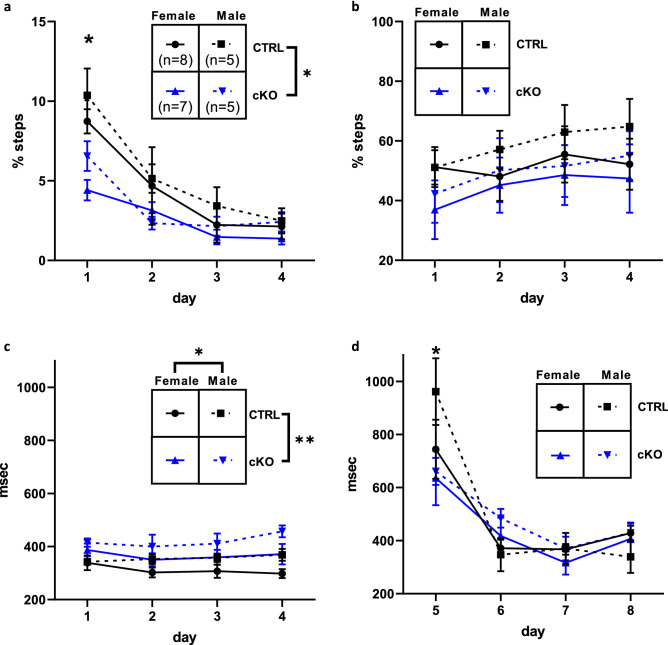Figure 2.
CaV1.2 cKO mice display slower gait but no deficit in cerebellar-dependent associative motor learning on the Erasmus Ladder task. (a) Neuronal CaV1.2 cKO mice had fewer missteps than CTRL littermates on day 1 which resolved on days 2–4. (b) We observed a main effect of day in the use of long steps, with no sex or genotype-dependent effects. Therefore, on average all groups use more long steps over the course of training, representing normal gait adaptation. (c) Neuronal CaV1.2 cKO mice had a longer average step time compared to CTRL littermates. Males also had a longer average step time compared to females. (d) All groups learn to jump over a displaced peg in response to a tone cue, shown as a decrease in step time between days 5 and days 6–8. Post hoc testing revealed that CTRL mice had longer post-perturbation step times on day 5 compared to cKO mice, but this was not observed on days 6–8, suggesting that all groups successfully learn to associate the tone with the displaced peg, representative of cerebellum-dependent associative learning. No sex-dependent effects were detected. Data are expressed as mean ± s.e.m, using ErasmusLadder 2.0.214, www.noldus.com/erasmusladder.

